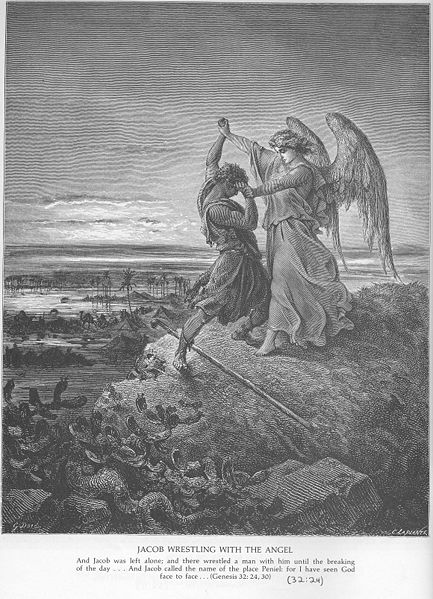
Rashi - Samchara - Bhava - Graha
Ratna - Nakshatra - Amsha - Varga
Shani in 3rd-from-Chandra
- Traditional Jyotishavidya Sacred Jewels Ratna for Shani
- Serious Shanaicarya reaches maturity = age 36
- [energizing-identifying lagnesha for Makara indriya-lagna]
- [energizing-identifying lagnesha for Kumbha indriya-lagna]
- BPHS Vimshottari MahaDasha of Shani
-
BP Lama commentary Shani Mahadasha
- [Shani in classroom-1]
- [Shani in classroom-2]
- [Shani in classroom-3]
- [Shani in classroom-4]
- [Shani in classroom-5]
- [Shani in classroom-6]
- [Shani in classroom-7] = [dikbala]
- [Shani in classroom-8]
- [Shani in classroom-9]
- [Shani in classroom-10] = [svabhava]
- [Shani in classroom-11] = [svabhava]
- [Shani in classroom-12]
- [Shani-Mesha] = [nīcha]
- [Shani-Urisha]
- [Shani-Mithuna]
- [Shani-Karkata]
- [Shani-Simha]
- [Shani-Kanya]
- [Shani-Tula] = [uchcha]
- [Shani-Vṛścika]
- [Shani-Dhanus]
- [Shani-Makara-Draco] = [svakshetra]
- [Shani-Kumbha] = [svakshetra] + [mulatrikona if within 0-20 deg]
- [Shani-Meena]
- [Shani-yuti-Surya]
- [Shani-yuti-Chandra]
- [Shani-yuti-Mangala]
- [Shani-yuti-Budha]
- [Shani-yuti-Guru]
- [Shani-yuti-Shukra]
- [Shani-yuti-Rahu]
- [Shani-yuti-Ketu]


OM sham shanaishcharaye namah
शनि śani
Professor Shani
Sauri - Sauron - Shanaicarya
Shanaidev Bhagavan
Sanisvaraya
अर्कपुत्र arka-putra = son of Sun
नीलवसन nīla-vasana = dark-blue visage
काल kāla = time
resides in
भ्रातृ bhratru
= brothers, brethren, fraternizing
सहज sahaja sahotta
= born with, co-borns, cohort
क्रम krama
= sequence, footstep, step-by-step
पराक्रम para-krama
= enterprise, marching forward
विक्रम vikrama
= step, walk, way, course
Saturan - Sauran - Sætern - Saturnus
the seventh one
Satu = Saturday
kevan - kaiwan - kiyyun - kaiamanu - khima
kρονος - kronos
Ninurta - Anu - El - Eli -
"The Old Sun // the best Sun"
occupies
the third house
fratres

Jacob_wrestling_the_angel_Gustav_Dore_1855
"The brain = wonderful organ. It starts working the moment you get up in the morning and does not stop until you get into the office."
~~ Robert Frost
"The lyf so short, the craft so long to lerne."
~~ Geoffrey Chaucer , Canterbury Tales
I long to accomplish a great and noble task,
but it is my chief duty to accomplish small tasks
as if they were great and noble."
- Helen Keller
When you are identified with the mind you get bored and restless very easily."
~~A New Earth 1948- philosopher Eckhart Tolle

EXAMPLES
[Shani-Mesha] = [nīcha]
[energizing-identifying lagnesha for Kumbha indriya-lagna] [retreating-contemplative vyaya-pati for Kumbha indriya-lagna]
-
check Kuja + Kuja drishti to source Shani's pushy rigidity, instinctive survivalism, primitive laws
[obligation to manage flesh and blood transactions] [physical fatigue from heavy administrative workload] [burdensome championship tasks]
[must regulate detailed competitive process] [communicates with rigid muscular gestures] [must report about bodily functions in structured announcement format]
[identified lagnesha with diligently dutiful descriptions of innovative methods] [repetitive virile fantasy vyaya-pati conversations] [mandatory messaging about knightly virtue]
[sober discussions about pioneering technique] [Maintains the public narrative of conquesting norms]
[stodgy warrior sibling-cousin or collegial team-mate may be movement instructor, weapons merchant, sports manager]
[gainful-friendly labha-pati for Meena - Antya indriya-lagna] [contemplative-visionary vyaya-pati for Meena - Antya indriya-lagna]
-
check Shukra + Shukra-drishti to source Shani's entreasuring discipline, evaluating strictures, historical rules
[obligation to manage food-storage transactions] [sensual fatigue from heavy administrative workload] [burdensome banking and warehousing tasks]
[must regulate detailed traditional process] [communicates with rigid eye and face gestures] [must report about valuable collections in structured announcement format]
[diligently dutiful descriptions of evaluated economic gain vriddhi-pati] [repetitive historical fantasy vyaya-pati conversations] [mandatory messaging about heritage values]
[sober discussions about genetics and breeding] [Maintains the public narrative of assessment norms]
[stodgy enriching sibling-cousin or collegial team-mate may be music instructor, fine-arts merchant, museum manager]
-
Photographer 1941-1998 vegetarian activist Linda Eastman McCartney [profitable-connected Kṛttikā-3] + [Kṛttikā-Shani-yuti-Guru-Mriga]
[dutiful-hierarchical karmesha for Mesha indriya-lagna] [friendly-gainful vriddhi-pati for Mesha indriya-lagna]
-
check Budha + Budha-bhukti to source Shani's conversational formality, commercial regulation, administrative governance
[obligation to manage informational transactions] [mental administrative fatigue] [responsible daily administrative official workload]
[must regulate detailed collaborative process] [communicates with rigid manual gestures] [must report about business in structured announcement format]
[diligently dutiful descriptions of economic gain vriddhi-pati] [fatigue from repetitive institutional karmesha conversations] [mandatory messaging about data delivery]
[sober discussions about sales, advertising, publicity] [Maintains the public narrative of communicative norms]
[stodgy talkative sibling-cousin or collegial team-mate may be skills instructor, marketing merchant, manufacturing manager]
-
POTUS-pair-13 Libraries 1798-1853 Abigail Powers Fillmore [populist-profitable Arudra-3] + + [Shani-3 parivartamsha Budha-11]
***
-
POTUS-06 American System 1767-1868 John Quincy Adams [secretive-emerging Mriga-4] + [Kopā-Mriga-Shani-yuti-Surya-Puna]
-
POTUS-28 The State 1856-1924 Woodrow Wilson [visionary-conceptual Arudra-4]
-
My Inventions 1856-1943 Nikola Tesla [systematic-gridworked Arudra-3] + [Arudra-Shani-yuti-Surya-Puna] + [Arudra-Shani-yuti-Budha-Mriga-Kopā] + [Arudra-Shani-yuti-Shukra-Puna]
[Yogakaraka believing dharmesha for Urisha indriya-lagna]
[Yogakaraka dutiful karmesha for Urisha indriya-lagna]
-
check Chandra + Chandra-drishti for Shani's comfortably unyielding, unmovingly established, protective rule-based ordering
[obligation to manage domestic commerce] [habitual administrative fatigue] [responsible comfortably rhythmic official workload]
[must regulate detailed localized process] [communicates with rigidly customary gestures] [soothingly familiar structured announcement format]
[steady class-conscious diligence for seasonal business duties] [mental depression in repetitive folkways management roles] [mandatory messaging about security]
[institutional discussions about agriculture and shipping] [Maintains the public narrative of established cultural norms] [responsible for maintaining simplified communication for the chattering audience]
[stodgy parochial sibling-cousin or collegial team-mate may be gardening instructor, marine merchant, housing manager]
-
USA-Sen-Utah 1947- finance Mitt Romney [calculating-logistical Pushya-2]
[secretive-revealing randhresha for Mithuna indriya-lagna] [inspirational-preaching dharmesha for Mithuna indriya-lagna]
-
check Surya + Surya-drishti to source Shani's dramatized discipline, displayed restrictions, showcase conventionalism
[obligation to message about the tenets of entitlement] [must report upon bright entertainments] [drafty red-and-gold parlors] [must display formalized gestures]
[cautiously dramatizing cohort] [must conduct ceremonially structured discussions about sacred beliefs dharmesha] [slow gaming model for daily business]
[lawfully flashy scheduling itineraries] [strictly self-referential mental regulation] [sober scripted intellectual conversations about transformative upheaval randhresha]
[responsible for maintaining simplified communication for the theatrical audience] [in an orderly fashion, must talk about political rights]
[stodgy gambling sibling-cousin or collegial team-mate may be poetic instructor, romantic merchant, showcasing manager]
- Sophie's Choice 1949- drama Meryl Streep [talkative-teamworking Magha-3] ??
[bargaining-balancing yuvati-pati for Karkata indriya-lagna] [mysterious-revealing randhresha for Karkata indriya-lagna]
-
check Budha + Budha-drishti to source Shani's dutiful arguments, orderly explanations, materialist logic
[obligation to message about the tenets of ministry] [must report upon complaints and disagreements] [drafty green-toned parlors]
[cautiously laboring cohort] [must assist structured discussions about unfairness] [slow service model for daily business]
[lawfully logical scheduling itineraries] [strictly reasoning mental regulation] [sober scripted argumentative conversations about transformative upheaval randhresha]
[responsible for maintaining simplified advocating yuvati-pati communication for the humble workers] [in an orderly fashion, must talk about betrayal and distrust]
[stodgy helpful sibling-cousin or collegial team-mate may be workplace instructor, medical merchant, debt manager]
-
Louisiana-Gov 1893-1935 Kingfish Huey P. Long [collaborative-mercantile Hasta-3] + [Hasta-Shani-yuti-Shukra-Hasta-nīcha] + [Hasta-Shani-yuti-Ketu-Aryaman]
-
Dittoheads 1951-2021 radio polemic Rush Limbaugh [fantasizing-conceptual Uttaraphalgunī-4]
[Shani-Tula] = [uchcha]
[inimical-medicating rogesha for Simha indriya-lagna] [balancing-bargaining yuvati-pati for Simha indriya-lagna]
-
check Shukra + Shukra-drishti to source Shani's rigidly harmonizing, fairly adjudicating, reciprocally orderly systems
[obligation to message about the tenets of equity] [must report upon deals and exchanges] [drafty pastel-colored parlors]
[cautiously judging cohort] [must balance structured complaining rogesha discussions about fairness] [slow impartial model for daily business]
[lawfully arranged scheduling itineraries] [strict but adjustable mental regulation] [sober scripted bargaining conversations yuvati-pati]
[responsible for maintaining simplified communication for the allies] [must patiently negotiatiate partnerships]
[stodgy middleman sibling-cousin or collegial team-mate may be brokerage instructor, trading merchant, mediating manager]
-
POTUS-pair-34 Military Families 1896-1979 Mamie Doud Eisenhower [collaborative-instructional Viśākha-3] = [ātmakāraka] + [uchcha-Viśākha -Shani-yuti-Budha-Viśākha]
-
Hugging Saint 1953- Ammachi of Kerala [evolving-erupting Chitra-4]
***
-
Faust 1749-1832 polymath Johann Wolfgang von Goethe [evaluating-historical Viśākha-2] = [ātmakāraka]
-
POTUS-29 Teapot Dome 1865-1923 Warren G. Harding [class-conscious, regulatory Arcturus-2] + [uchcha-Arcturus-Shani-yuti-Surya-Svati-nīcha] + [uchcha-Arcturus-Shani-yuti-Mangala-Viśākha] + [uchcha-Arcturus-Shani-yuti-Budha-Viśākha]
-
The Tower 1865-1939 Symbolist poetry William Butler Yeats [bargaining-balancing Chitra-3] = [navamsha-Shani-Tula-uchcha] = [vargottamsha] + [uchcha-Chitra-Shani-yuti-Rahu-Chitra] + [in 10th-from-Chandra]
-
Jungle Book 1865-1936 Empire Rudyard Kipling [visionary-fantasizing Arcturus-4]
-
Chariots of Fire 1955-1997 Dodi al-Fayed [financial-heritage Viśākha-2]
[witty-speculative vidya-pati for Kanya indriya-lagna] [inimical-medicating rogesha for Kanya indriya-lagna]
-
check Kuja + Kuja-drishti to source Shani's forward-driving discipline, penetrating restriction, regulated rejuvenation
[obligation to message about transformational tenets] [drafty oxblood-colored parlors] [rigidly catastrophizing cohort] [must provoke structured discussions about emergencies]
[burdensome task to deliver frightening announcements]
[slow controlled-explosion model for daily business] [stodgy animosity rogesha toward interventionist planning for renewal] [lawfully evolving scheduled itineraries]
[strictly disaster-responding mental regulation] [sober scripted recycling conversations about politics vidya-pati] [responsible for maintaining simplified communication for the terrified]
[identity-changing sibling-cousin or collegial team-mate may be rejuvenating instructor, mystical merchant, crisis manager]
-
Ethica ordine geometrico 1632-1677 Baruch Spinoza [diplomatic-accommodating Anuradha-3] = [navamsha-Shani-Tula-uchcha] = [Anuradha-Shani-yuti-Surya-Anuradha] + [Anuradha-Shani-yuti-Budha-Viśākha]
-
POTUS-16 Emancipation 1809-1865 Abraham Lincoln [bargaining-contractual Anuradha-3] = [navamsha-Shani-Tula-uchcha]
-
Sound and Fury 1897-1962 novelist William Faulkner [dramatizing-ceremonial Anuradha-1]
[Yogakaraka homebound-securing bandesha for Tulā indriya-lagna] = [Yogakaraka speculative-creativr vidya-pati for Tulā indriya-lagna]
- check Guru + Guru-drishti to source Shani's principled legalism, doctrinal strictures, theoretical systems
[obligation to message about humanistic tenets] [drafty saffron-colored parlors] [rigidly orthodox cohort] [must patronize structured discussions about faith]
[slow theoretical model for daily business] [stodgy globalist interpretation of localist concerns bandesha] [lawfully inspirational scheduling itineraries]
[strictly catechetical mental regulation] [sober scripted philosophical conversations about creativity and children vidya-pati] [responsible for maintaining simplified communication for the believers]
[indoctrinated sibling-cousin or collegial team-mate may be principles instructor, guiding merchant, sacerdotal manager]
[Shani-Makara-Draco] = [svakshetra]
[busy-collaborative sahaja-pati for Vṛścika indriya-lagna] [homebound-anchoring bandesha for Vṛścika indriya-lagna]
[drafty old stone parlors] [rigidly class-conscious cohort] [hierarchical business systems]
[separative conventional process handling sahaja-pati] [legally fixed scheduling itineraries] [required messaging about governance security bandesha]
[strictly ordered mental regulation] [must deliver respectfully limited scripted announcements] [must conduct structured discussions about social position]
[status-minded sibling-cousin may be institutional instructor, cautious merchant, normalizing manager]
-
UK Princess 1961-1997 Diana Spencer [populist-connected Uttarāṣāḍha-3] + [Uttarāṣāḍha-Shani-yuti-Guru-Śrāvaṇa-nīcha]
-
POTUS-pair-44 Let's Move 1964- Michelle Robinson Obama [calculating-logistical Dhaniṣṭha-2] = [ātmakāraka] + [Dhaniṣṭha-Shani-yuti-Surya-Vaishva] + [Dhaniṣṭha-Shani-yuti-Mangala-Vaishva-uchcha]
*******
-
Syriana 1961- drama-activist George Clooney [profitable-connected Uttarāṣāḍha-3] + [Vaishva-Shani-yuti-Chandra-Śrāvaṇa] + [Vaishva-Shani-yuti-Guru-nīcha -Śrāvaṇa]
[Shani-Kumbha] = [svakshetra] + [mūlatrikoṇa if within 0-20 deg]
[acquisitive-evaluative dhana-pati for Dhanus - Haya indriya-lagna] [collaborative-communicative sahaja-pati for Dhanus - Haya indriya-lagna]
[obligation to message about community connections] [drafty cold-air parlors] [rigidly proletarian cohort]
[distributed-array model for daily business] [associative-linkage process handling sahaja-pati] [popular scheduling itineraries]
[strictly gridworked mental regulation] [friendly scripted conversations about money dhana-pati] [responsible for maintaining systematic mass-participation communication]
[interlinked sibling-cousin or collegial team-mate may be economics instructor, networking merchant, fundraising manager]
-
Pope-266 Francis 1936-2025 Jorge Bergoglio [ministering Pūrvābhādra-2]
[energizing-identifying lagnesha for Makara - Draco indriya-lagna] [collecting-preserving dhana-pati for Makara - Draco indriya-lagna]
-
check Guru + Guru-drishti to source Shani's visionary legalism, dreamlike strictures, vaguely-conceptual social ordering
[obligation to message about abstractly conceptual financial dhana-pati narratives] [intuitive gestures preserve formalized poetic discourse]
[commercial transactions require pragmatic symbolism] [identified lagnesha with structural use of dreamlike interiority] [responsible for maintaining visionary communication]
[clairsentient sibling-cousin or collegial team-mate may be wholistic instructor, imaginative merchant, cetacean manager]
-
Liberia-Pres 1938- Ellen Johnson Sirleaf [governing-organizational Revatī-2] + + [Shani-3 kahala-parivartamsha Guru-1]
-
France-Pres-pair 1967-singer Carla Bruni Sarkozy [arranging-adjusting Andromeda-3] = [navamsha-Shani-Tula-uchcha]
-
Sans attendre 1968- chanteuse compositrice Celine Dion [hierarchical-normalizing Revatī-2] + [asta-yogakaraka-Revatī-Shani-yuti-Rahu-Revatī] + [asta-yogakaraka-Revatī-Shani-yuti-Surya-Andromeda]
***
-
Flowers of Evil 1821-1867 symbolist poet Charles Baudelaire [networking-earning Revatī-3] + [Revatī-Shani-yuti-Surya-Revatī] + [Revatī-Shani-yuti-Mangala-Uttarabhādra] + [Revatī-Shani-yuti-Budha-Uttarabhādra-nīcha-bhanga] + [Revatī-Shani-yuti-Guru-Revatī] + [Revatī-Shani-yuti-Shukra-Uttarabhādra-uchcha]
-
CNN buffalo lands 1938- Ted Turner [ideological-cheerful Revatī-1] + + [Shani-3 kahala-parivartamsha Guru-2]
" I try to live as normal a life as possible.
You don't get spoiled if you do your own ironing."
~~ Sophie's Choice 1949- drama Meryl Streep


Printing Press from c. 1568-CE , western Europe

SHANI occupies SAHAJA-STHANA = bhava- 3
discouragement
melancholy
must formally message
administrative drudgery
mandatory scripted communications
grim announcements
mental depression or mental discipline
socially-approved dutiful roles as sibling, manager, writer, editor, reporter, interpreter, or planner
naturally, any graha yuti Professor Shani teaching in classroom-3 will alter the outcome
Writes about, discusses, reports on, makes announcements regarding, attends meetings and trainings on the topic of
exhausting committee-work
disciplined, work-focused, stodgy mentality
obstructionist cohort
change-resistant sibling
formulaic conversations
resistance to structural change in mental, manual, or verbal practices
resistance to collaboration + obligation to lawfully discuss
grumpy
may be mentally rigid,
officious, humorless, sober-minded
mentally overburdened, pessimistic,
beset by burdensome tasks
with contributing stress from other graha, especially with mutual drishti of Kuja, shani-3 may exhibit extra-strict mental regulation with intrusive thoughts such as OCD
institutional business, the transactions of the institutions.
Typically in communicative [akashic memory patterning] of government, very large corporation, industrial complex.
Obligatory writing, announcements, reports, explanations, instruction
-
Rigid, sober, highly structured, change-resistant mentality
-
Highly regulated thought patterns
-
May suffer from negative relationship to the journalistic press
Required effort related to twins, teams, transactions, and talk
Old News
Shani-Kanya-3 with Ketu. apparently unchangeable, repeating narrative of severe poverty, resentment, and structural resistance to improvement
EXAMPLE
Louisiana-Gov 1893-1935 Kingfish Huey P. Long [collaborative-mercantile Hasta-3] + [Hasta-Shani-yuti-Shukra-Hasta-nīcha] + [Hasta-Shani-yuti-Ketu-Aryaman]
[Shani-Kanya] = [Shani in Bhava-3]
-
A tireless worker for social change [Shani randhresha] HPL began communicating with large groups of poor-folk [Kanya-3] in his early 20's. Budha-1 Spokesman = ruled by a passionately ideological Chandra-Rahu-9, adding ambition to his preacher-style moralistic appeal to the grievances of the masses.
Repetitious Effort required due to Lack of communicative credibility (anti-Surya)
Professor Shani teaching in classroom-3 represents resistance to change which necessitates the effort that is required to achieve a consistent and credible role in communications technologyr.
mentality of sobriety and duty
When under severe pressure [for example, preparing for high-stakes exams] Shani in bhava-3 can generate pessimism or despair.
Shani-3 can signal depression during Shani bhukti, but on average it is more a preference for passive acceptance of business conditions and an attitude of realism in communications.
Repetitive Tasks, Grueling Itinerary
EXAMPLE
POTUS-16 Emancipation 1809-1865 Abraham Lincoln [bargaining-contractual Anuradha-3] = [navamsha-Shani-Tula-uchcha] = [Shani in Bhava-3-Vrischika]
-
AL worked as a "circuit-rider" (3 repeating circuits) lawyer and judge for many years in rural Illinois Territory.
-
Later his political career in USA-Congress, and POTUS-16 during the Civil War, caused almost constant exhaustive traveling within a 10-state area. 3-short-term, high repetition itinerary.
Repeating Scenarios of work overload = Teams, department, Ensemble
In the office or when communicating about a process, one may assume some significant task-management burdens in which "responsibility exceeds authority".
One may be expected to manage uncooperative teammates or an immature cohort. Inadequately funded or staffed projects must be concluded - with the the Shani native's own time likely required, in ordere to finish it.
Shani usually shows scarce-resource areas, where one must apply the most social-material effort in life.
In 3, the normal daily duties are often most effortful.
EXAMPLE
POTUS-29 Teapot Dome 1865-1923 Warren G. Harding [class-conscious, regulatory Arcturus-2] + [uchcha-Arcturus-Shani-yuti-Surya-Svati-nīcha] + [uchcha-Arcturus-Shani-yuti-Mangala-Viśākha] + [uchcha-Arcturus-Shani-yuti-Budha-Viśākha]
-
WGH = newspaperman, in the days when newspaper owners wrote much of their own copy.
-
WGH had to be listening [3] for newsworthy conversations around town, interviewing newsworthy people, writing detailed articles, and carrying the broadsheet to the printing press - all on a daily basis [Shani-3, daily duties, carrying burdens, mandatory listening]
Parashari drishti to domains 5, 9, and 12.
-
See: dealing with the negative expectations of Shani in bhava-3
-
All forecasts improve with planetary support from Budha.
dedicated, disciplined placement for literary editors, inspectors and regulators in the publishing industry, publicity managers, and those concerned with structuring the media-message-image
If Shani-yuti-Surya, shani's implications include the father
EXAMPLE
Ethica ordine geometrico 1632-1677 Baruch Spinoza [diplomatic-accommodating Anuradha-3] = [navamsha-Shani-Tula-uchcha] = [Anuradha-Shani-yuti-Surya-Anuradha] + [Anuradha-Shani-yuti-Budha-Viśākha]
- famous philosopher-divine and manual lens grinder [Shani-3]
-
BS's father operated the family's ocean-freight shipping business [Budha]. Spinoza's father was killed on shipboard by crossfire during a maritime battle.
-
Shani-yuti-Budha difficult business for dad, and Shani-yuti-Surya trading Surya activates -7.
A sibling-cousin or team-mate may create weighty duties in the life of Professor Shani teaching in classroom-3 .
Can be the weight of social responsibility, such as being assigned to supervise a younger sib. Can also be an anchoring social-legitimacy weight, adding respectability when formal situations require some type of escort . Generally, one accepts a weight of management and process administration.
Shani imposes regulated vertical [Makara] and horizontal [Kumbha] systems. Shani in bhava-3 = information reporting systems (media publishing).
Mental Anxiety. Works overtime to gain the respect of the neighbors, the team, or the departmental working group.
-
UK Princess 1961-1997 Diana Spencer [populist-connected Uttarāṣāḍha-3] + [Uttarāṣāḍha-Shani-yuti-Guru-Śrāvaṇa-nīcha]
With professional seniority and a disciplined narrative, shani-3 can mature into a capable, if austere, technical report writer.
Often a soberly structured planner.
-
POTUS-pair-44 Let's Move 1964- Michelle Robinson Obama [calculating-logistical Dhaniṣṭha-2] = [ātmakāraka] + [Dhaniṣṭha-Shani-yuti-Surya-Vaishva] + [Dhaniṣṭha-Shani-yuti-Mangala-Vaishva-asta-uchcha]
Fear and worry regarding the sibling-team and communication output.
-
Must work to earn validation of the mentality. Works to be fully approved, in compliance, and judged perfect under the rule of statutory law .
-
Yet survival fears based in [akashic memory] enforce the mandate to perform this work over and over again, until the ignorance is transformed into wisdom.
"Have not reported lawfully enough" syndrome.
EXAMPLE
My Inventions 1856-1943 Nikola Tesla [systematic-gridworked Arudra-3] + [Arudra-Shani-yuti-Surya-Puna] + [Arudra-Shani-yuti-Budha-Mriga-Kopā] + [Arudra-Shani-yuti-Shukra-Puna]
-
NT suffered lifelong depression [Shani-3] compounded by the wandering, listless Chandra+Ketu-6. In elder years he was hounded by Obsessive Compulsive Disorder and anorexia
Writing
Shani feels comfortable in a svabhava of Budha the tool-user. Shani-3 [uchcha] can be particularly helpful for writers to order their thoughts.
However, there is always some liability of mental depression, even when produced publications are skillfully executed.
If other graha especially Budha are supportive of writing excellence, professor Shani teaching in classroom-3 = benefits of disciplined application of planned plots, clearly formulated conversations, and structured writing plans.
EXAMPLE
Sound and Fury 1897-1962 novelist William Faulkner [class-conscious Shani occupies dramatizing Anuradha-1]
-
Author of 13 novels and many short-stories.
-
Masterful rendering of southern-USA vernacular dialog [3].
1949 Nobel Prize in Literature
1954 Pulitzer Prize
EXAMPLE
Flowers of Evil 1821-1867 symbolist poet Charles Baudelaire [networking-earning Revatī-3] + [Revatī-Shani-yuti-Surya-Revatī] + [Revatī-Shani-yuti-Mangala-Uttarabhādra] + [Revatī-Shani-yuti-Budha-Uttarabhādra-nīcha-bhanga] + [Revatī-Shani-yuti-Guru-Revatī] + [Revatī-Shani-yuti-Shukra-Uttarabhādra-uchcha]
-
CB = a prolific writer of famed Symbolist lyrical poetry, artistic critical reviews, academic studies, and celebrated literary translations.
EXAMPLE
Jungle Book 1865-1936 Empire Rudyard Kipling [visionary-fantasizing Arcturus-4] [3, corporate publication]
-
Kipling = writing machine. As a children's author, newspaper writer, lyricist of popular songs, and composer of patriotic poetry, rK delivered a continuous output of literary best-sellers.
-
Early in his career, rK married into the Balestier publishing family [Shani-uchcha-3 rules 7, marital contract]. Lifepartner Carrie Balestier not managed their home around RK's writing routines. She also assured the impeccable production of each manuscript, from editing to page design to bookstore handling [3]. Without Carrie's business skills, rK's writing would likely not have reached the target Edwardian audience.
-
RK's rendering of the elegance of Empire [uchcha-Shani, justified systems] was considered exemplary by the Anglosphere colonial ruling classes [Shani, class-conscious]. Although tarnished by racism and cultural arrogance, his children's books do continue to sell [3] - due largely to the Balestier family press.
LEARNING PATHWAY of Shani-3 may involve necessary dealings with
-
rigidly structured lawful communications
- pre-incarnationally planned limits restrict communicative expression
- Shani-structured, apparently mandatory resistance against scripts, plans, schedules, meetings
- effortful experience of daily conversation , tired from business travel
- intimidated by difficult commercial decisions
- heavy obligation to publish, announce, report
- mental pressure, depression; rigid hands
- fear of excommunication and dismissal from the neighborhood, cohort or thought-group
resistance to messages (angels) - fear of collaboration - anxiety about publicity + obligation to respectfully discuss
mental weight, grave thoughts
resistance to siblings and small-group process + obligation to message and announce
profound sense of responsibility for matters of writing and publication yet frustration with communicative duties and often insufficient resources in the commercial office
Professor Shani's classroom in bhava-3 features the experience of matching the fear of the siblings , fear of the thought-group, fear of the ensemble, fear of thinking, fear of hands-arms, fear of lungs, fear of gesturing, fear of breathing. Fear creates scarcity and lack.
Shani's instruction in upachaya sthāna are particularly objective and clear; "stop matching that which is not lawful to you" (stop matching the fears of others) and proceed with caution.
Matters of upachaya bhava-3 improve with time and maturity
self-made financial wealth , self-generated family
Children = Denied or delayed
Conforming to the lowest common denominator
Managing Shani's thought projections - a legacy of Negative expectations
Responsibility to Order Communicative Environments = Media Management
Professor Shani teaching in classroom-3 's lifetime communication skills may be reduced or retarded.
Resistance to change in matters of
-
instructional delivery
-
media design, information formatting
-
scheduling, planning, itineraries
-
making announcements, reports, sharing the news
-
constructing conversations, managing dialog.
Minimalist style in verbal and written transactions. Provides the least possible information in reports and announcements.
The paucity of information provided and extreme brevity of meetings is not necessarily an aid to understanding. In fact the curt, abbreviated style associated with Professor Shani teaching in classroom-3 can be a problem in business as Professor Shani teaching in classroom-3 cannot easily chat.
Anxiety (throat constriction) about releasing too much information may produce social criticism for Professor Shani teaching in classroom-3. One may be perceived as withholding, controlling, or uncooperative.
On the other hand, when Shani enjoys a favorable rashi and supportive drishti, the messaging outcome can be elegantly streamlined.
The work team that must integrate a Professor Shani teaching in classroom-3 member may find themselves frustrated. Professor Shani teaching in classroom-3 cannot easily adapt one's style of communication or increase the speed of publication. Quicker minds may find Professor Shani teaching in classroom-3 to be slow-going and rule-bound. Their depressed and delayed mentality seems unhealthy but indeed it has longevity; that persistent Professor Shani teaching in classroom-3 team member will outlast the less patient and in the end the work will get done correctly unless the depression becomes too severe.
To avoid depression, professor Shani teaching in classroom-3 must be engaged in mental, transactional, communications work! One must contribute to society in the areas of information management, sales, planning, and teamwork.
However, professor Shani teaching in classroom-3 is normally too dour and fearful of change to become a successful manager of people. Professor Shani teaching in classroom-3 is often happier working alone.
Handling information? yes. Handling people? no. (Exceptions: helpful drishti from Budha or the vikrama-pati-3; bhratru-pati-3 in lagna; other beneficial angles.)
comfortable results : the hands, arms, and shoulders tend to change very little over time. One may have a surprisingly youthful appearance in these body parts as a result. These parts look old or world-weary [Shani] in the first part of life, but because Shani resists change, they may look surprisingly"timeless " in elder years.
Less helpful: lung [akashic memory patterning] , due to suppressed griefr.
Shani in bhava-3 = an administrative functionary who works the socially approved system of collaborative mentality and daily business procedures.
Siblings, daily conversations, and administrative process are fundamentally stubborn, persistent, conservative and slow.
Shani=3 must apply sustained effort with limited resources toward the maintenance of day-to-day mundane communications, meetings and plans, writing and thinking, and the technology which supports group interactions.
Some difficulties or maturation required before obtaining fortune and 'wins' (5 and 9). Worry due to blocked access to meditation/prayer (12). Shani's extreme sobriety can produce mental-emotional depression in bhava-3 of mental process.
-
Upachaya bhava + Shani is friend of natural regulator Budha = Maturity and self-discipline
-
over time, will correct these early frustrations and give long-term success.
-
comfortable and pleasing results after the second Shani return at approximately age 60..
Fully comfortable results from Professor Shani must wait for the fullness of time, but graha drishti of malefic to dushthamsha bhava-8 = generally beneficial.
Distrust of siblings-cousins, children, the father, and one's own dreams. Depressive mentality. Negative expectations. Worst-case thinking, suspicious of the motives of neighbors, teammates, and co-workers. Uncomfortable and unpopular in small groups such as corporate departments and sports teams.
Better if Shani occupies a rashi of Shani, shukra, or Budha. Better with any type of support from Shukra
Typical mistakes due to past-life pre-incarnationally planned ignorance
Mistakes may tend to follow an iterative pattern, and a long-term burden carried, in the areas of
-
teamwork, siblings, group communications, media production skills, writing, scripts, publications, advertising, public relations, communication devices of all kinds, self-made financial wealth , conversations, articulation of narratives.
Shani in bhava-3 tends toward moderate progress in the task of learning from one's mistakes in matters of small-group interaction. Pace of self-correction depends on whether Shani occupies a hospitable rashi.
Once the early mistakes are corrected, Professor Shani teaching in classroom-3 institutes a rigorous routine of attention to the rules of business.
After mastery [Shani] is acquired via practical experience in "the school of hard knocks ", there may be surprising success in activities which demand intensive group collaboration (3) and close attention to matters of messaging, media-packaging, and public relations.
Less fluent, more stodgy and resistant, regarding sibling interactions, writing and conversation as a Youth. A younger sibling may cause heavy workload and become particularly burdensome.
After the age of 31 (past the first Saturn Return) Shani-3 often notices an improvement in mature objectivity toward matters of information handling, interpersonal communication, and media-messaging.
Example of Shani-3 pragmatic approach to publicity, promotional communications
Agents of vikramasthāna enact a fearful, life-threatening [Shani] script of punishment and restriction.
Agents of bhava-3 = the siblings, cousins, cohort, coworkers, collaborators, transaction-groups, team-mates, castmates, classmates, ensemble, equipe, signalers, writers, publishers, reporters, announcers, hand-crafters, instructors, explainers, describers, scribes, media-messengers, senders of epistles and missives, evangelists, administrators, businesspeople. The bhava-3 agents say:
You follow the rules, or else we (the sibling-cousins, cohort, instructors) will eject you from the communication group, and freeze your access to our information transactions.
Professor Shani teaching in classroom-3 = narrative of the threat of excommunication and dismissal Further embroidered with contributing voices from the rashi of Stoic Shani, incoming drishti to bhava-3, shani's angle relative to Chandra-lagna, shani's placement in navamsha, and planetary tenants in those bhava ruled by Shani, etcr.
SEVA recommended service to others
For one who feels mentally fearful about negative potentials, or finds oneself in a chronic state of anxious worry about every detail of life, the best Seva may be offered to those with chronic depression that is so severe that they cannot (or believe they cannot) enjoy life. They may need significant help to have some laughter or amusement (5) visit inspiring holy places (9) or access hospital care (12).
The target folk are often beset with a crippling worry about annihilation, oppression, and scarcity [Shani] and they may seem to be blinded to positive evidence which contradicts their naysaying. Their mental mechanism may seem to be frozen by horrible worries. The anxiety may have a physical dimension which limits the function of the lungs, hands, arms, or shoulders.
Also Seva on behalf of those who have, congenitally or via injury, lost their fingers, hands, or arms, or who have chronic lung disease (Shani-3) can be very beneficial.
Also, on a more positive note, service to the deaf community such as teaching sign language to interpreters or training deaf students to communicate with their local sign language, or providing translation services for deaf audiences at public events, could be a wonderful Seva. Shani-3 can indicate deaf or hard-of-hearing.
Potentially helpful physical therapeutics
Seek therapy for depression and a tendency to look for negative implications. That type of depressed mentality is indicated by Shani-3. Ayurvedic medical professionals can suggest therapeutic diet, healing oils, massage, sleep, and exercise patterns which can alleviate some of the tendency to preferentially expect negative outcomes.
COMMUNICATION PRESSURe
Endurance in business, in writing, in cohort-interaction
Shani is built for distance, not for speed
drudgery in office work
Shani in bhava-3 - deficiency of communications
upachaya bhava improves with Time
core areas of initial lack of understanding + required repetition =
-
3 = siblings
-
5 = children, creativity
-
9 = father, wisdom
-
12 = extramarital relationships
Pressure (Shani) to articulate, describe, explain (3)
Pressure (Shani) to manage, administer, coordinate
Shani-3 systematically regulates reporting
One is judged according to one's collaborative, conversational mentality and publication skills.
May be rejected by the sibling or work-team.
A slow, pessimistic , and ponderous thinker. Hobbled by caution and mental negativity. Often invalidated by the work-group for slow response time . [akashic memory patterning] of dealing with people who are mentally ill, short-tempered, or depressed. Always short of mercurial speed.
Shani friend of Budha = in 3 = benefits clear written instructions because Shani resists verbosity .
Shani restricts both 5th and the 5th-from-5th = children either denied or a heightened responsibility
Four areas of special difficulty caused by pre-incarnationally planned necessity to correct a deficiency of communication.
Core Practice Environments which require repetitive drill and study:
-
siblings or cousins especially the younger one (3)
-
children, romantic lovers, and intelligent literary or dramatic creativity (5)
-
father, professors, priests (9)
-
private imagination, the studio, the bedroom (12)
Depression and pessimism
Very demanding communicative work.
Project Deadlines
Uncooperative teams
Mental discipline. Isolated and alienated from the dominant cultural conversation. Negative turn of mind "" . Very slow and painstaking progress in all projects.
Courage, ahallmark of bhava-3, is repressed by fearful Shani. Even if other Graha show communicative fluency, one's internal narrative will exhibit social reticence and recurring self-doubt.
published narrative =
Capability to express or package the information one has access to and controls, is much constrained. Mentally cautious and reserved.
Publication, public expression handicapped by personal trepidation, government law, or conservative social policies.
Favors highly structured and dogmatic thought. Shani/3 is not a block against public speaking, but rather shows The muster needed to perform public communications duty.
If Budha is strong, professor Professor Shani teaching in classroom-3 may triumph in promoting His own views, after a very long struggle. But he will have to cultivate friendships with conservative thinkers to do so.
Repetitive thought patterns center on disciplinary matters: home, family, mother, the homeland .
-
Strong Shani in bhava-3 = manu-facture of objects of strict discipline through the craft of the hands
Shani-3 Mental Effects
Shani slogs on
No rest for the weary
One works for the corporation, for the bureaucracy, for the communications system, for the social process -- not primarily for oneself.
The perception of tiredness, harsh conditions, and mental limitations may be particularly acute when Shani-3 occupies a rashi of one's of Shani's planetary enemies = Surya, chandra, or Mangala
- [Shani-Mesha] = [nīcha] (blood feud, caste bigotry, racism, brain)
- [Shani-Karkata] (exhaustion, sadness, defensive)
- [Shani-Simha] (stymied by politics, bitter about glamour)
- [Shani-Vṛścika] (contempt, resentment, bilious frustration)
One may be obliged to manage (3) an anxious mentality. The inner conversation receives less nourishing flow of new and different ideas, due to strict-Shani's punitive blockage on
- amusements and delights, games (5)
- philosophical, theoretical temple discourses (9)
- private prayer, meditation, dreams, spirit guidance (12).
Rigid thinking about time and lack of permission to relax. No easy release for worries. Materialistic mentality, creates depression.
Shani in 3 reduces mental health and positive ambition. Causes depression/anxiety set in a worst-case-scenario set of expectations stemming from difficulties with siblings in childhood. Feels pressure to conform in communicative style.
Beneficial for traditional crafts and formal thought which improves with practice, e.g., writing in formal styles, mastering social registers of speech and behavior, playing musical instruments, handling utensils.
The immediate younger sibling is likely to be quite productive of polarizing catalysis . Teamwork is demanding, with Shani-2 shouldering excess workload. Children are constrained by time or lack of resources, due to Shani's drishti upon bhava-5 and bhava-9.
Resistance and delay or blockage to hands or hearing. Native feels lifelong pressure to conform to traditional or lowest-common-denominator social practices.
-
Shani in bhava-3 gives rigid thinking . Shani insinuates qualities of ignorance, resistance and resentment into the character of the sibling relationships, the work-group process, and the cycle of repeating daily thoughts. Shani in bhava-3 provides a general [akashic memory patterning] of not being heard, included, or recognized by the group.
-
Shani limits the communicative range and constrains one's effort to write and gesture. Growing up, one's sibling environment is somewhat harsh and defined by scarce resources - often the result of brutal competition for the parents' attention. If there are no siblings (common also with Shani/3), shani-2 is raised in isolation and interactive communication with peers is strictly limited.
-
In adulthood, shani-2 expects isolation and oppression in the work-group. Often works alone. No matter how hard one"tries " to be recognized and fully included in the communicative circle, one's contribution seems less important than others'. Sincerely friendly team relationships are difficult to maintain. Shani-2 works diligently at communications, and may become highly expert, but one's persistent background negativity emphasizes craft over inspiration. The writings are overly formal and perceptions are dull.
-
Shani delays access to important meetings, short journeys, brief vacations and business trips. May reduce invitation to join team conferences where shared-value conversations, scheduling, schematics, and strategic planning are being developed. Shani-3 may be often out of the loop in communications; passed over for promotions. Staunch and sober Shani-3 can be considered unproductive, dull, or dead wood in communications-intensive environments. A stickler for process rules, lacking flexibility for adaptive change. Prefers older technology.
-
Shani-3 may be positioned in administrative roles that feature responsibility in excess of authority. Rarely attempts to overcome limitations. Accepts a heavy official workload with little opportunity for amusement. Depressed and plodding. Generally less of a team player. Well suited to bureaucratic management tasks, formal reporting procedutes, regulatory process definition.
-
Further, shani creates psychic resistance to starting one's own family . This pessimism about recreating a family may well be overcome by other positive influences, but the residual effect of negative expectations regarding the group communications that are the essence of family life, may persist.
-
Resistance also to building "self-made treasury" through starting one's own business.
(The above situation can be alleviated somewhat for lagnas friendly to Shani, such as Tulā indriya-lagna a nd Urisha indriya-lagna, Kanya indriya-lagna and possibly Mithuna lagna too.)
Matters of upachaya bhava-3 improve with time and maturity
Mitigants
-
Shanaicarya is happier when He resides in the svabhava of Shani's friends, Budha and Shukra. Therefore, shani's negative expectations are slightly easier to handle in domains 2, 3, 6, and 7.
-
In addition, bhava-3 is an upachaya dushthamsha: matters of bhava-3 typically improve, agood deal, with maturity and time. Early results are delayed, but later results are favored.
-
asks such as disciplined writing and hand-craft of all kinds will improve with practice. In a favorable rashi, shani-drive repetition and practice will produce excellent results in bhava-3. (Exempli gratia, manual practice of musical instrument, writing or painting utensil, body massage, etc.)
bhava-3 is the svabhava of Budha
Shani and Budha are friends.
Therefore, vikrama-sthāna = relatively neutral location for Shani.
Shani aims to meet social expectations.
The work-group is expected to work.Shani is ready for that reality, with His characteristic hard-working and practical attitude toward life.
-
Yet, many people also expect the work-group to replicate the shared-culture, socially validating, friendly-competition pleasures of their childhood sibling group.
-
Most societies support sibling-style, lifetime bonding in the Adult work-group. 2nd-from-2nd = a natural extension of family-based value traditions and virtual kin.
-
Grumpy Shani-3 has little tolerance for fond sentiment. He is notorious for a pragmatic and often humorless approach toward getting the job done.
-
Generally, flow-freezing Shani does not easily share thoughts with others. His process model is manufacturing rather than inspirational interaction.
-
Therefore, while Shani-3 is often burdened with management responsibility, He may resist team-building activities that have no immediate measurable output.
Get Back to Work
-
Shani takes His marching orders from the System, and He follows all instructions (3) from the regulators of His organization. If He is told to conduct team-building entertainments, He will do it. Nevertheless, shani-3 may dislike apparently time-wasting activities such as water-cooler chat, group lunches, or planning retreats. He may attempt to minimize resource-squandering interruptions in order to get back to work.
6th-from-10 impedence to career promotion
Shani-3 may be seen as lacking enthusiasm for team-work.
Grumpy Shani-3 sits in 6th (conflict) from 10 (promotions) where He may be passed over for promotions. In His own mind, shani works twice as hard as everyone else yet He may receive less recognition.
Shani = minimalist. His cramped, legalistic style of communication may be unmotivating to the workgroup. Shani-3 can signal resentment and frustration in the team environment. Shani especially dislikes wasting time on unnecessary activity such as conversation.
Shani-3 may be an excellent placement for bureaucrats, computer programmers, technical writers, government or industrial inspectors, specialists in documentation of rules and regulations, military communications, computational (not philosophical) mathematics, instructors of repetitive practical skill training, and actors in other highly formalized, and rule-driven, mentalized work-group environments.
-
Shani-3 usually has a steady work history so long as the potential for clinical depression can be managed.
-
Flourishes in government bureaucracy with guaranteed step-wise promotions based on longevity not creativity.
Shani's job is to inculcate personal responsibility (without guilt) and neutral acceptance of the pre-incarnationally planned process.
-
Domains occupied or aspected by Shani become the primary agents of Taskmaster Shani's mission: to convert ignorant error into calm wisdom .
-
Shani will do"whatever it takes " to command Shani-2 's attention . Shani will recall Shani-2 over and over to a central difficulty, arepeating failure, or an insurmountable obstacle.
-
Matters of the bhava owned or aspected by Shani will mechanically - from the unconscious mind - produce, unfair, disappointing, and deprived results.
Shani's impact on life experience is painful and frustrating but, in the end, extremely beneficial. The pain can be reduced dramatically through neutral awareness and acceptance of the role one plays in creating one's own destiny.
-
The conscious human has less control over the flow of events, and more control over how one reacts to those events.
-
Once Shani-2 has established a pattern of calm and non-judgmental reaction to the flow of events, Shani's job is done - and the pain stops! (The events continue but they just roll past...)
-
The faster one can achieve neutral awareness of one's own negative expectations, the faster one can eliminate the pain.
Mind-dulling repetition
Bhava-3 high-frequency low-content
Unfortunately for the slow learner, shani-3 tends to prefer repeating lessons in matters of commerce, communication, and cohort.
Shani-3 is associated with difficult managers, intractable office conditions, commercial obstruction, and uncooperative or unproductive co-workers.
Shani's patterns create long-term mental-health learning pathways which in most cases can endure for a lifetime.
After obtaining conscious awareness of the presence of a pattern of repeating disappointment in the small-group environment - whether sibling-cousins, neighbors, or collaborators - often benefits from intentional practice of forgiveness
Shani's negative, pessimistic, fearful, scarcity-oriented, survival-driven, and faith-lacking impact from bhava-3 gives Parashari drishti upon bhava 5, 9, and 12. This drishti pattern gives negative expectations which produce restriction, interruption, And delay in matters of
-
bhava-3 = ability to use the verbally competitive, immature, open-minded, conversational skills which are first developed in The sibling/cousin/playmate group
-
bhava-5 = ability to have children and romance , express intelligence, be recognized for genius, to win contests, claim authorship or special expertise, feel"lucky" .
-
bhava-9 = ability to have grandchildren and students , carry out priestly duties, conduct ceremonies, receive wisdom teachings, travel to religious destinations, have gainful and beneficial friends
-
bhava-12 = ability to use the power of the imagination to access deep knowledge, to cross easily over the boundaries between attachment and detachment to fleshly life, psychic perception, instructional dreams, and access to sanctuary space
To increase the chances of happiness in this life, one born with Professor Shani's classroom located in bhava-3 must remain particularly *vigilant* against the onslaught of Shani's legacy of negative expectations upon these realms of perception.
Strong, favorable graha in these domains will significantly override the prognosis for frustration and interruption in domains 3, 5, 9 and 12. Yet, the presence of Professor Shani's drishti will be subtly noticeable. E.g., total blockage may turn to delay, or material handicap may manifest as psychological resistance - but Shani's pre-incarnationally planned drishti will never be completely erased.
Conforming to the lowest common denominator
-
Oppression in the Sibling group
bhava-3 = "siblings " which includes cousins, neighbor playmates, early schoolmates, etc. The keynote of bhava-3 is "competition" .
-
Shani forces Orderly interactions within the sibling/cousin group. Transactions must conform to the lowest common denominator = the least capable person in the group sets the standard. Variation from the set"law and order" norm is discouraged.
-
In childhood, the sibling group imposes survival pressure to conform to parental expectations. Their conservative, self-protective values emphasize scarcity Of parental attention, formal rules for communicative interaction , and pressure to cooperate with other siblings in a specified, orderly, formal fashion.
-
Parents may impose a tightly rule-drive, controlled communication style on their children, and withhold their affection unless the children conform to standards that emphasize order, quiet and self-restraint.
Shani limits access to self-made financial wealth in preference to conformity with the wage-earning classes. If Shani-2 has his own business or independent means of financial wealth (not means given by the family) then one's income by this method is meager, and one lives "close to the bone" , although this situation can improve with time.
Denied or delayed permission to establish one's own family, usually due to a perceived"need to wait" for material accumulations. (Upachaya - improves with time.)
-
From bhava-3, shani casts drishti to both bhava of Children: bhava-5 and bhava-9. Expect production of children to be slow and somewhat impeded , except during Guru bhukti.
Native experiences discipline of strict formalization upon the mentality . Writing, conversation, and small-group interaction, particularly conversation, are shaped and molded into conventional containers. Repeating the childhood training, adventure from the rigid, sanctioned form may be punished.
bhava-3 being 7th-from-9th, relationships with professors, priests, gurus, moral and ceremonial authorities, are highly formalized. For this reason Shani-2, while often highly skilled in formal academic and literary expressions, may not be invited into the academy.
Limited opportunity for individualization in relationship to religion;
conforms to the status quo.
3 produces gainful vritta fruits of vidyasthāna
Fruits of bhava-5 = bhava-3
Children and recognition for creative genius (5) may be delayed. (Brihaspati drishti to bhava-5 shortens the delay.)
bhava-5 projects its wishes and goals (11th-from) upon bhava-3. The fruits of creativity and pro-creativity can be delayed by rigid, materialistic mentality = negative expectations =depression.
5 produces gainful vritta fruits of yuvati-bhava-7
Fruits of bhava-7 = bhava-5
contracts and agreements (7).
Jaya bhava = social programming to marry, to form fruitful and balanced partnerships.
bhava-7 projects its wishes and goals (11th-from) upon bhava-5.
Conventional expectations for marriage may typically include obtainment of profit (11th) in the form of children (5) or other species of creative output (5).
Putrasthāna receives the drishti slowing, maturing, patience-demanding effect of Shanideva Bhagavan. Shani normally does not deny. He delays and detours and derails but ultimately His learning pathway does not deny the fruits. So, patience is required wherever Shanaicarya makes the rules.
Shani-3 casts Parashari Drishti into bhava-9
9 contains the fruits of 11
11 = networks of friendship and marketplace profits
11 projects its wishes and goals into bhava-9.
bhava-9 receives Shani-3 drishti. Shani-3 applies a materialistic, pragmatic, minimalizing, scarcity-oriented attitude to matters of 5 + 9 + 12.
9 is first and foremost the father, who is typically a hardworking (Shani) personality with minimal tolerance for fluff and frill. Dad tends to be conservative in matters of sacred doctrine, and dad may be more concerned with the social approval factor in religious conduct, rather than seeking inspiration or ultimate meanings.
Shani's 7th drishti into dharmabhava-9 may reduce or temper the social agenda to to play a priestly role in the current lifetime, such as professor or religious figure. One may apprehend grandchildren and students as sources of responsibility more than joy. The pursuit of higher knowledge (9) may be framed as unnecessary or socially unsupported
Yet, Time is always Shani's helper. One may pursue the higher teachings, or professional level credentials (9, believability, credentials) later in life with beneficial result.
Shani's drishti into bhava-9 can restrict access to the temples of knowledge such as universities, academies, spiritual centers. In the younger decades, one may believe (9) that higher philosophical education -- beyond the basic socialization levels of education provided in bhava-4 - is not an open pathway .
Access to university graduate studies for example may be delayed until middle age. Shani delays availability of inspirational wisdom-teachings due to Shani-3 's typically practical, hands-on, materialistic mentality. Naturally, shani wizens with age so depending upon conditions in 9, one may eventually bring a mature common-sense into public guidance roles (9). It is reasonable to expect that all matters of 9 would be slowed and seasoned with age.
Shani-3 may view the sangha or cognoscenti as a class of public guidance figures whose faith is perhaps greater than their proven abilities.
As usual a strong graha occupying bhava-9 can mitigate Shani's scarcity-thinking drishti, perhaps changing a severe handicap to mere inconvenience.
bhava-3 is an upachaya dushthamsha therefore matters of bhava-3 tend to improve with maturity and the gaining of tangible Earthly experience.

[How Readings Work] = [Sample Sacred Jewels Ratna Recommendationn] = [Seva]
 file update =
27-Nov-2025
file update =
27-Nov-2025
[Copyright © 1994-2024 by Barbara Pijan Lama] = [Contact] = [How to Request a Jyotishavidya Reading]
Barbara Pijan Lama Jyotishavidya Vedic Astrology Surya Sun Chandra Moon Mangala Mars Budha Mercury Guru Jupiter Shukra Venus Shani Saturn Rahu Ketu Graha Planets Dasha Timeline Calendar Nakshatra Navamsha Marriage Children Treasury Career Spiritual Wisdom Cycles of re-Death and re-Birth
The information on barbarapijan.com is provided for educational purposes only. Wishing you every happiness and continuing success in studies!
all that is true, all that is noble,
all that is just and pure,
all that is loveable and gracious,
whatever is excellent and admirable -
fill all your thoughts with these things."
~~ Paul of Tarsus, Epistle to the Philippians 4:8

